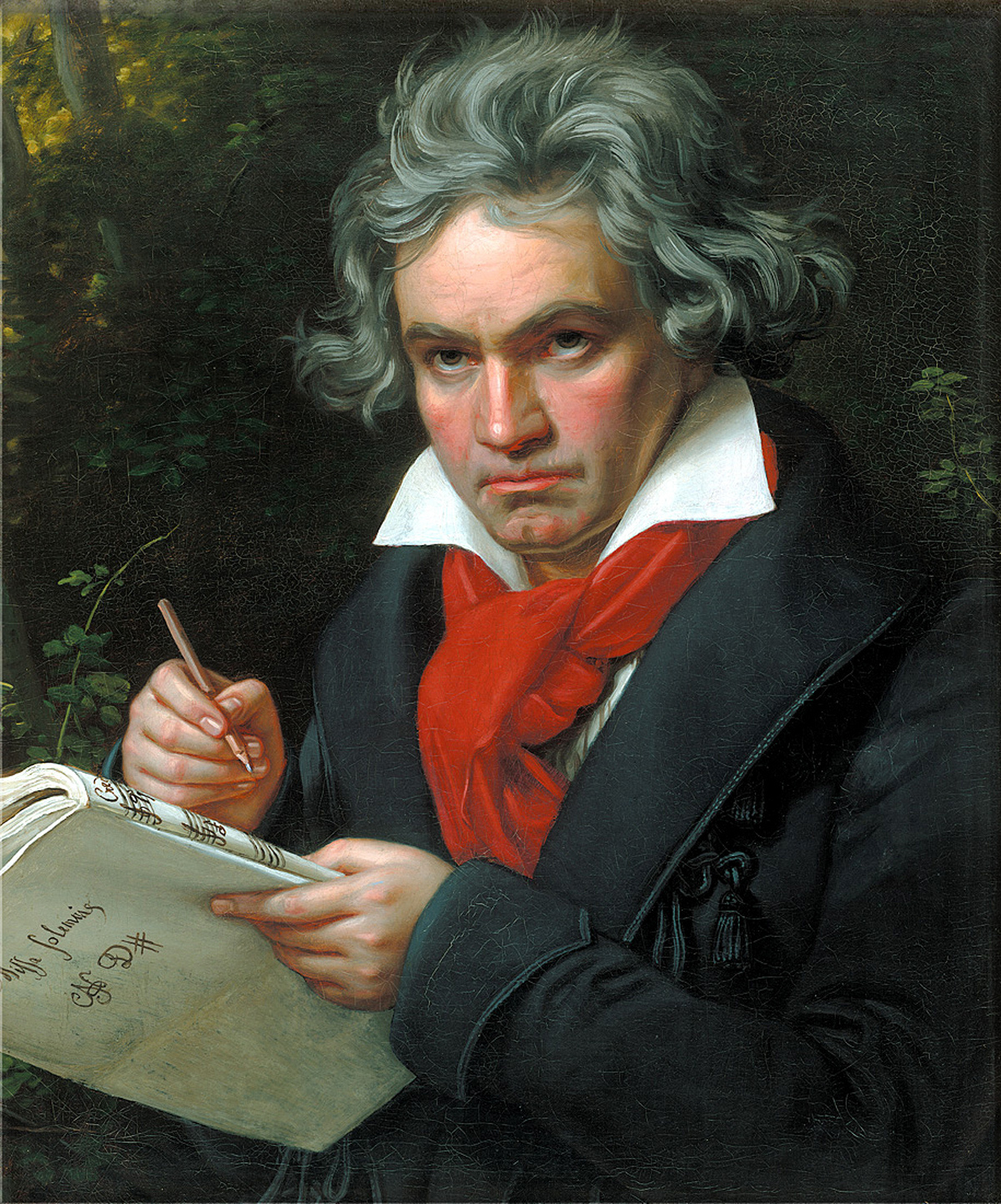“Had I the heavens’ embroidered cloths,Enwrought with golden and silver light,The blue and the dim and the dark clothsOf night and light and the half light,I would spread the cloths under your feet:But I, being poor, have only my dreams;I have spread my dreams under your feet;Tread softly because you tread on my dreams.”
wrote W.B. Yeats to the love of his life, Maud Gonne. Love is a strange phenomenon that can make mediocre men in to poets, artists and composers. What happens when a great poet, artist or a composer fall in love?
ඉහත කවිය W.B. Yeats කවියා Maud Gonne වෙත ඇති සිය ආදරය ප්රකාශ කිරීමට ලියූ කවියක්.ආදරයට පුළුවන් විශේෂ දක්ෂතා නැති සාමාන්ය මනුෂ්යයෙක් පවා කවියෙක්,චිත්රශිල්පියෙක් හෝ සංගීතඥයෙක් කරන්න.ඉතින් සහජයෙන් ම දක්ෂ කවියෙක්,චිත්රශිල්පියෙක් හෝ සංගීතඥයෙක් ආදරයෙන් බැඳුනාම මොකක් සිද්ධ වෙයිද?
As evident by the above poem, it inspires them to create miraculous compositions. The piece of music that I wish to write about today is the result of a maestro falling in love.
එයින් ඔවුන්ව යොමු කරනවා මේ තියෙන කවිය වගේ අතිවිශිෂ්ඨ නිර්මාණ බිහිකිරීමට.අද මම විස්තර කරන්න යන්නේ ඉතිහාසයේ හිටපු මහා සංගීතඥයෙක් ආදරයෙන් බැඳීම නිසා බිහිවුනු නිර්මාණයක් ගැන.
 |
| Ludwig van Beethoven (Source: http://bit.ly/5qVOr) |
In the time period 1770- 1827 lived a German composer and pianist. He is known to the masses not only for his brilliant compositions but also for the rather unique bits of trivia that circle his life. (Gossip, if you may.) He was none other than Ludwig van Beethoven, who of course is my favourite composer of all time.
මේ සංගීතඥයා ජීවත් වුනේ 1770-1827 කාල පරාසයේ ජර්මනියේ.මොහු දක්ෂ පියානො වාදකයෙක්ද වුනා.මොහුගේ ප්රසිද්ධියට මොහු අතින් සිදුවුනු අතිශය සුවිශේෂී නිර්මාණ වගේම මොහුගේ පෞද්ගලික ජීවිතයේ රසමුසු තැන්ද ඉවහල් වුනා.ඔහු තමයි මගේ ප්රියතම බටහිර සංගීතඥයා වෙන Ludwig van Beethoven[ඉංග්රීසි උච්චාරණය: /ˈlʊdvɪɡ væn ˈbeɪt.həʊvən/ (ලුඩ්විග් වෑන් බේතෝවෙන්), ජර්මන් උච්චාරණය: [ˈluːtvɪç fan ˈbeːt.hoːfn̩] ලුඩ්විෂ් ව’(ෆ)න් බේතෝ(ඕ)ෆන්].
Für Elise or in musical jargon, “the Bagatelle No. 25 in A minor (WoO 59 and Bia 515) for solo piano.”, is the most popular piece composed by the maestro. The German name “Für Elise” translates in to English as "For Elise". Who this Elise was, remains a mystery to this day.
Für Elise, සංගීත භාෂාවෙන් කියනවා නම් “the Bagatelle No. 25 in A minor (WoO 59 and Bia 515) for solo piano.”, තමයි බේතෝවෙන්ගේ වඩාත්ම ලෝක ප්රසිද්ධ සංගීත නිර්මාණය.“Für Elise” කියන ජර්මන් නමේ තේරුම තමයි “එලීස් වෙනුවෙනි” කියන එක.මේ එලීස් කියන්නේ කාටද කියන එක අදටත් නොවිසඳුනු ගැටළුවක්.
The most interesting bit of information about this piece apart from its unparalleled beauty and simplicity is the hidden message in the first three notes of the score. The three notes gives out the name “Elise” in two different ways. The first three notes are, E-D♯-E, which are enharmonically equivalent sounds to E-E♭-E. The E♭ is called Es in German and is pronounced as "S". Add the non-notational “LI” and you get E-(L)-(I)-E♭-E (E-li-es-e -> Elise). The second way to get this is by singing the first several notes of the composition with note names. “Dis” is the pronunciation for D♯. So we end up with “E-Dis-E-Dis-E”, which is a mondegreen (a phrase that sounds similar to another phrase so far that mishearing or misinterpretation of that phrase, when the other is pronounced or Vice-versa, is highly likely) to the name "Elise".
මේ සංගීත නිර්මාණයේ සරල බව හා අලංකාරයට අමතරව මෙහි තිබෙන තවත් සිත් ඇදගන්නා අංගයක් තමයි නිර්මාණයේ මුල් ස්වරතුනේ සඟවා ඇති පණිවිඩය.මුල් ස්වර තුනෙන් “එලීස්” කියන නම දෙවිධියකට කියවෙනවා. මෙහි මුල් ස්වර තුන වෙන්නේ, E-D♯-E මේ ස්වර නාදමය වශයෙන් ගත්තාම E-E♭-E කියන ස්වර තුනට සමානයි.ජර්මන් භාෂාවෙන් E♭ කියවන්නේ “Es” විධියට.ඒ කියන්නේ ඒක වර නැගෙන්නේ “එස්” කියලා. දැන් සංගීතයට අයත් නැති “LI” අකුරු දෙකත් එකතුකලාම ලැබෙනවා E-(L)-(I)-E♭-E (E-li-es-e -> Elise). දෙවෙනි ක්රමය තමයි මුල් ස්වර තුන ඒවායේ නම් වලින් කියවීම. D♯ කියන ස්වරය කියවන්නේ “Dis” කියලා. ඉතින් මේ ස්වර කියවෙන්නේ “E-Dis-E-Dis-E” (ඊ-ඩිස්-ඊ-ඩිස්-ඊ) විධියට. ශබ්ධමය වශයෙන් මේක “එලීස්” කියන නමට ආසන්නයි.
Beethoven had at least three romantic affairs, none of which resulted in marriage. (He died a bachelor) Of these three affaires, some speculate Therese Malfatti von Rohrenbach zu Dezza (1792–1851) to be the inspiration of the music piece claiming that the title “Für Elise” to be a faulty transcription the title “Für Therese" by Ludwig Nohl who discovered the score and published it 40 years after the composer's death.Some scholars argue that this was written for the German soprano Elisabeth Röckel (1793–1883) who indeed was known in Vienna as "Elise" and was a close friend of Beethoven's since 1808.(Not one of the said three affairs)
බේතෝවෙන් තෙවරක් තෙවරක් ආදරයෙන් බැඳුනු බවකුයි ඉතිහසෙයේ සඳහන් වෙන්නේ.ඒත් මේ එකක් වත් විවාහයෙන් කෙළවරවුනේ නෑ.සමහර විද්වතුන්ගේ අදහසේ හැටියට බේතෝවෙන් මේ නිර්මාණය කර තිබෙන්නේ මේ කාන්තාවන් තිදෙනාගෙන් එක් අයෙක් වෙන Therese Malfatti von Rohrenbach zu Dezza (1792–1851) වෙනුවෙන්. ඔවුන් කියන හැටියට මේ නිර්මාණයේ නියම නම “Für Therese”.මේ නම් මාරුව සිද්ධවුනේ Ludwig Nohl ගේ වරදින් කියලා තමයි ඔවුන් කියන්නේ.Ludwig Nohl තමයි මුළින්ම මේ නිර්මාණය බේතෝවෙන්ගේ අත්පිටපත් අතරින් සොයාගෙන ප්රසිද්ධ කළේ.ඒ වෙන කොට බේතෝවෙන්ගේ මරණය සිද්ධවෙලාත් අවුරුදු 40ක් ගතවෙලා ඉවරයි.වෙනත් විද්වතුන් පිරිසකගේ අදහසේ හැටියට මේ නිර්මාණය කෙරිලා තියෙන්නේ ජර්මන් ගායිකාවක් වූ Elisabeth Röckel (1793–1883) සඳහායි.අර මුලින් සඳහන් කළ තිදෙනාගෙන් අයෙක් නොවුනත් මැය 1808 සිට බේතෝවෙන්ගේ ළඟම මිතුරියක්ව සිටි අතර වියෙනා නුවර දී ඇය හැඳින් වූවේත් “එලීස්” යන නමින්.
You can listen to the famous piece from the embedded YouTube video. Like in the previous post, Air on the G String, the video clearly shows the music notation and spatial note variation. Once you have listened to it, you will know from where you have heard this before. The extreme simplicity and popularity of this tune has had done both good and bad to it. While it took this piece to the ears of the people who are not fans of classical music, it also made them make mental links of this piece of love to very uncharacteristic actions and objects such as reversing vehicles and bread sellers. That exactly is the reason why I first gave you the piece’s background and then gave you the piece to hear. I was hoping that now because you know about the piece, you can enjoy it for what it really was.
පහත ඇති YouTube සල දසුනෙන් මේ නිර්මාණයට සවන්දෙන්න ඔබට පුළුවන්. කලින් මම ලියු Air on the G String හි සල දසුනේ වගේම මෙහිත් ස්වර ප්රස්ථාරය හා රූපක ස්වර විසිරීම පෙන්වා තිබෙනවා.මෙයට සවන් දුන් පසු ඔබ මෙය කළින් අසා තිබෙන්නේ කොහේදීදැයි මතක් වේවී.මේ නිර්මාණයේ ඇති සරල බව හා ජනප්රියත්වය එයට යහපත් මෙන්ම අයහපත් ප්රතිඵලද ගෙන ආවා.යහපත් අතට ගත් කළ එය දැන් සම්භාව්යප සංගීත රසිකයන්ට පමණක් හුරුපුරුදු නාද රටාවක් නොවෙයි.නමුත් අනිත් අතට සම්භාව්යස සංගීත රසිකයන් නොවන අය එයට සවන් දුන් විට දැන් ඔවුනට මතක් වෙන්නේ පසුපසට යන වාහනයක් හෝ පාන් වෙළෙන්දෙක්.අන්න ඒ නිසා තමයි මම මුළින් ඔබට මෙහි ඉතිහාසය කියා දී ඊට පසු එය අසන්නට සැලැස්වූයේ.දැන් මේ නිර්මාණය ගැන ඔබ දන්නා කරුණු නිසා ඒදෙස වෙනත් කෝණයකින් (මුළින්ම එය ඇසූ අයෙකුට දැනෙන හැඟීමෙන්) ඒ දෙස බලන්නට ඔබට හැකියැයි සිතමි.
P.S.:- On another sad note, the above mentioned poem of W.B. Yeats didn’t win him the love of Maud Gonne either.
ප.ලි. : තවත් දුක්බර සිද්ධියක්. ඉහත සඳහන් කළ කවියෙන් Maud Gonne ගේ ආදරය දිනා ගන්නට W.B. Yeats ට හැකි වූයේද නැහැ.



